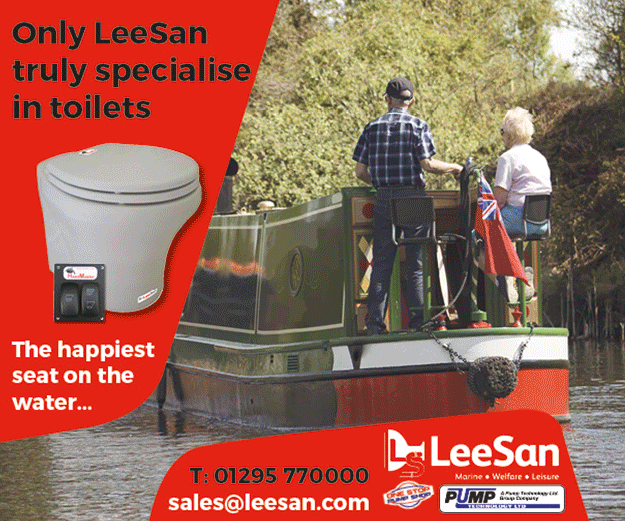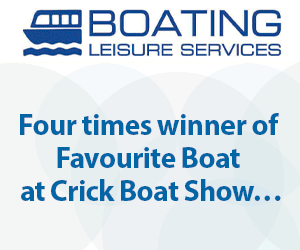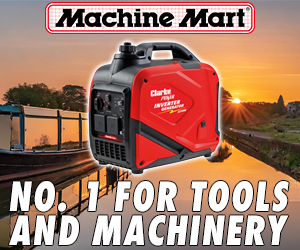Getting Afloat
Our tips on buying a boat, including • how to find the right mooring • how to keep costs under control when specifying a newly built boat
Buying a Boat

If you’re thinking of joining the fast-growing numbers afloat on Britain’s waterways, congratulations. Buying a boat should be an enjoyable experience, and one which results in the boat of your dreams. But don’t let yourself get carried away. A new narrowboat is often the second largest investment you will make, after your house. With so many boat-builders to choose from, it is essential that you research your purchase meticulously.
1 Getting started
A fully-fitted new narrowboat is not your only option. You can choose a second-hand craft, or a share in a boat (often one-twelfth) from one of the well-established ‘shared ownership’ operators. If you are an experienced craftsman, you can buy a ‘sailaway’ to fit out yourself, or even a bare shell. Though narrowboats are most common, you could choose a Dutch barge or river cruiser, depending on the waterways you want to cruise.
Whatever you settle for, you should always have hired a boat beforehand. You should also look for a mooring early on, even if you don’t take it up immediately. Moorings are especially scarce in southern England and the Midlands.
Check list:
- Are you sure a new narrowboat is right for you?
- Check your budget – can you afford it?
- Have you identified a mooring?
Read about moorings
2 Boat design
You can choose an off-the-peg or bespoke boat. With an off-the-peg boat, the build process will be simple and you might save money. A bespoke boat is built entirely to your own requirements, but may be harder to resell. Narrowboat prices are roughly proportional to length.
Check list:
- Will your boat size fit the waterways you want to cruise? (Some locks are only around 58ft long.)
- Will your design suit your cruising patterns? (Would you resent assembling a double bed every night?)
How to keep costs down when specifying a boat
3 Choosing a builder
We recommend you consider at least three builders, even if the first one you see looks ideal. Visit a boat show (the main one is Crick at the end of May) with your list of requirements; go to any open days that the builders arrange; then visit the boatyard itself, and meet the proprietors.
Speak to other owners, including those having boats built at the moment, and inspect at least one of the their previous boats. Check the builder’s trading history and that they are VAT-registered. If you have any doubts, don’t proceed. If it looks too good to be true, it probably is.
Check list:
- Does the builder have experience of your desired features?
- Have you researched the history of the company?
4 Dealing with your builder
The right contract is essential. You should use the standard British Marine Federation staged payment contract, or a variation/alternative with which you are 100% happy. Agree the final boat design in writing at a face-to-face meeting, including the equipment to be fitted, materials to be used (e.g. steel thickness), and a plan of the layout (use a 1ft-square grid). Then sign up to an agreed price and a realistic completion date, including dates of staged payments, each to be made only after work is complete.
We strongly recommend that you consider employing an independent surveyor of your own choosing to monitor the build.
Check list:
- Have you arranged finance?
- Does your contract avoid large deposits, advance payments, and any payments in cash?
- Have you agreed on transfer of ownership when a third party (e.g. shell-builder) is involved?
- Will you visit regularly to check on progress – including at least once ‘in passing’ without appointment?
5 Accepting your new boat
The boat must be built to the requirements of the European Recreational Craft Directive, including full documentation. You should consider getting a Boat Safety Scheme examination, though this is not compulsory for new boats.
When you’re ready to cruise, you will need:
- a mooring;
- a licence (usually from Canal & River Trust or the Environment Agency);
- and insurance.
Find out more
You should do as much research as possible. Read WW, scour the internet, and buy every book you can. The extra time and money will be as nothing when you’re buying an £80,000 boat that might take six months to build.
BoatSearch
Visit BoatSearch for a comprehensive, accurate and up-to-date listing of canal boats for sale.
Books
Guide to Narrowboat Planning
By Graham Booth – boat design explained. (£14.99 from WW online Shop)
Other sources
WW Annual
An introduction to the waterways including comprehensive listing. (£9.99 from WW online Shop)
Waterway maps
Prices vary (from the Inland Waterways Association bookshop)
Canal & River Trust
0303 040 4040, canalrivertrust.org.uk





